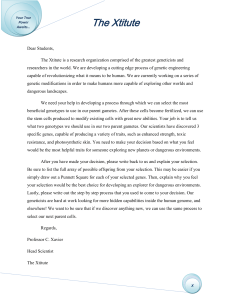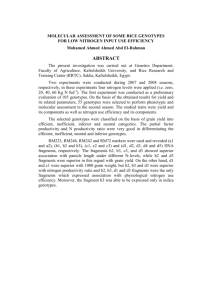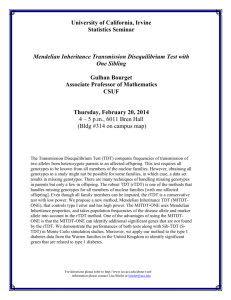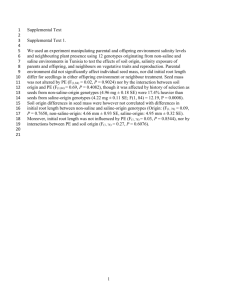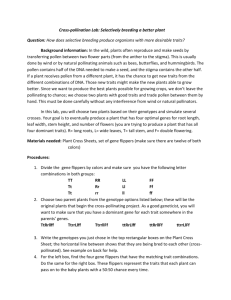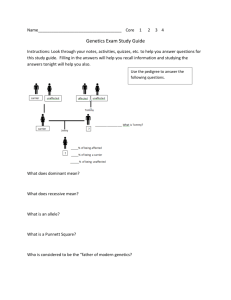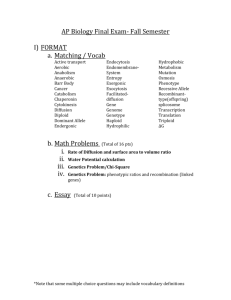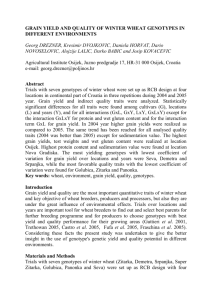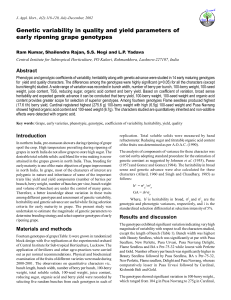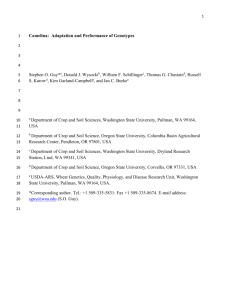007
advertisement
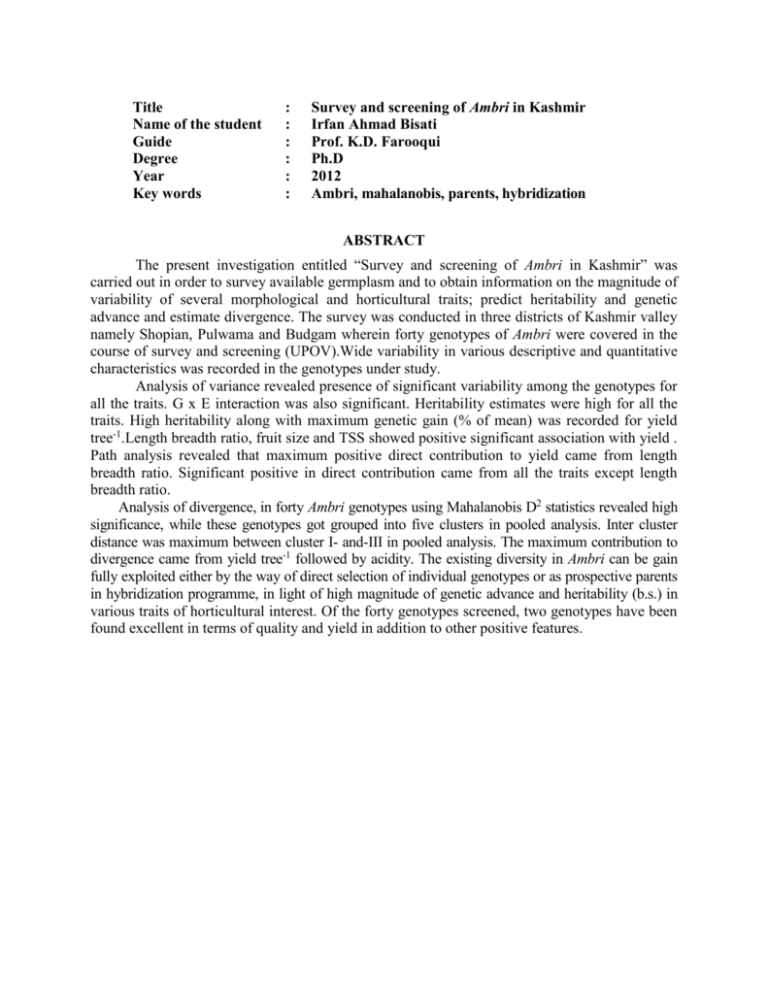
Title Name of the student Guide Degree Year Key words : : : : : : Survey and screening of Ambri in Kashmir Irfan Ahmad Bisati Prof. K.D. Farooqui Ph.D 2012 Ambri, mahalanobis, parents, hybridization ABSTRACT The present investigation entitled “Survey and screening of Ambri in Kashmir” was carried out in order to survey available germplasm and to obtain information on the magnitude of variability of several morphological and horticultural traits; predict heritability and genetic advance and estimate divergence. The survey was conducted in three districts of Kashmir valley namely Shopian, Pulwama and Budgam wherein forty genotypes of Ambri were covered in the course of survey and screening (UPOV).Wide variability in various descriptive and quantitative characteristics was recorded in the genotypes under study. Analysis of variance revealed presence of significant variability among the genotypes for all the traits. G x E interaction was also significant. Heritability estimates were high for all the traits. High heritability along with maximum genetic gain (% of mean) was recorded for yield tree-1.Length breadth ratio, fruit size and TSS showed positive significant association with yield . Path analysis revealed that maximum positive direct contribution to yield came from length breadth ratio. Significant positive in direct contribution came from all the traits except length breadth ratio. Analysis of divergence, in forty Ambri genotypes using Mahalanobis D2 statistics revealed high significance, while these genotypes got grouped into five clusters in pooled analysis. Inter cluster distance was maximum between cluster I- and-III in pooled analysis. The maximum contribution to divergence came from yield tree-1 followed by acidity. The existing diversity in Ambri can be gain fully exploited either by the way of direct selection of individual genotypes or as prospective parents in hybridization programme, in light of high magnitude of genetic advance and heritability (b.s.) in various traits of horticultural interest. Of the forty genotypes screened, two genotypes have been found excellent in terms of quality and yield in addition to other positive features.

